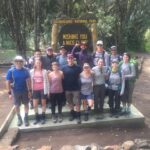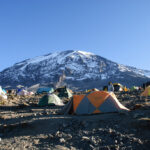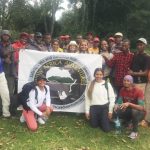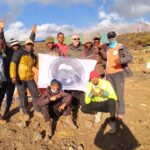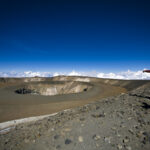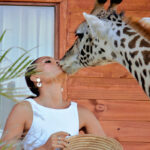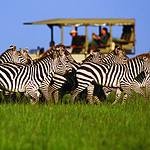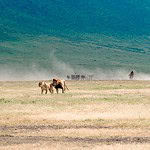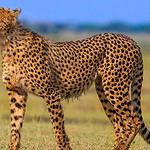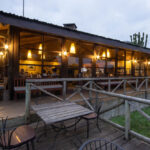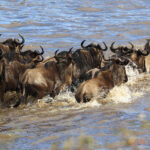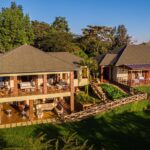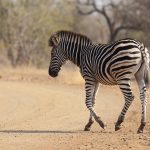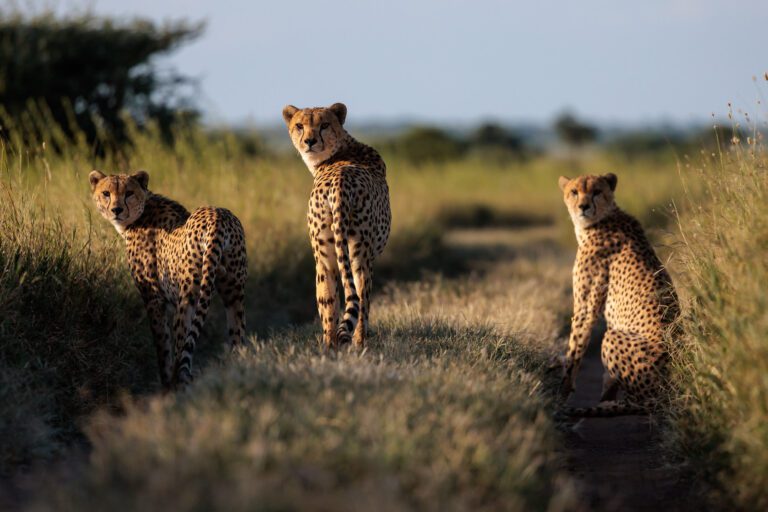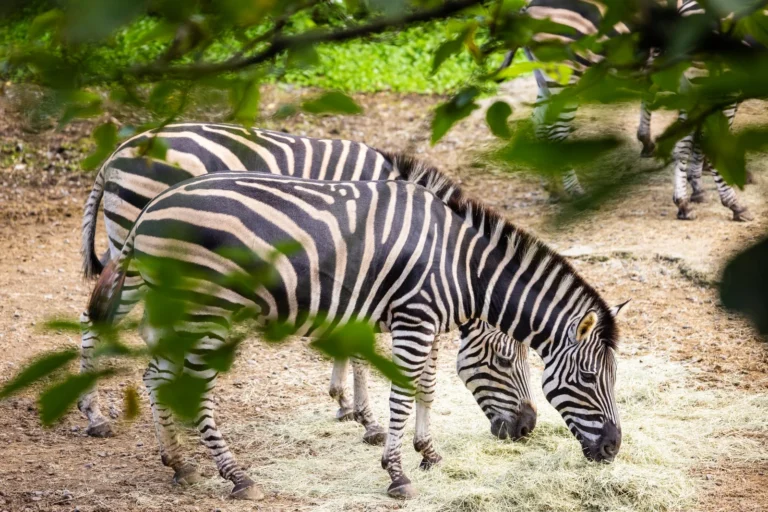Table of Contents
Hidden Hot Springs: Geothermal Escapes Near Ngorongoro
Tucked within the dramatic landscapes surrounding the Ngorongoro Conservation Area, Ngorongoro hot springs offer a serene counterpoint to the wild safari experience. Imagine soaking in warm, mineral-rich waters heated by the earth’s core after a morning wildlife game drive. A visit to these springs is a rejuvenating treat for both body and soul.
These geothermal retreats are set against spectacular natural backdrops—crater rims, rolling hills, and lush woodlands—and combine adventure with relaxation in a way few destinations can. Whether you’re soaking solo under the big sky or gathering amongst friends at a communal spring, Ngorongoro hot springs promises a unique connection to nature.
1. What Are Ngorongoro Hot Springs?
Ngorongoro hot springs are natural thermal pools fed by heated subterranean water rising through volcanic rock. These springs, located on the fringes of the famed Ngorongoro Crater, often sit beside rivers or nestled in valleys—offering steaming hot baths framed by wild beauty.
Unlike luxury spa resorts, these natural pools evoke rustic charm with stone basins and wooden platforms. Bathers soak in therapeutic warmth surrounded by birdsong and sweeping vistas—perfect after exploring the Ngorongoro highlands.
2. Why Visit Ngorongoro Hot Springs?
Reasons to seek out Ngorongoro hot springs:
- Relaxation: Warm waters soothe muscles stiffened by safari drives.
- Health Benefits: Mineral-rich pools reputedly ease joint pain and skin conditions.
- Scenic Escapism: Mountain, crater, and forest views make for mindful bathing.
- Cultural Interaction: Local Maasai or Hadzabe tribes may guide you, sharing herb lore.
- Unique Adventure: Adds diversity—a splash of tranquility amidst wildlife immersion.
These geothermal escapes elevate any itinerary to include rest, culture, and healing.
3. Where to Find Them
Not all Ngorongoro hot springs are publicly accessible—but a few well-known sites include:
- Engaresero Springs: Warm pools with crater views.
- Lemagantu Springs: Stone basins beside a forested river.
- Naini Springs: Tucked near tribal villages, offering local guide insights.
Each spring lies within a 1–3 hour trek or short drive from Ngorongoro lodges, blending access with remote appeal.
4. Typical Visit Itinerary
Here’s what a hot-spring day might look like:
- Morning safari drive through crater rim and plains.
- Return to camp for brunch, then depart for hot springs.
- Guided hike through greenery to reach the geothermal pool.
- Pause at the spring for herbal tea served by a Maasai guide.
- Soak in warm water, absorbing minerals and mountain views.
- Lunch under trees using fresh local produce.
- Hike back at sunset, reflecting on wildlife encounters and spa-like immersion.
This full-day outing combines wildlife, wellness, and culture in one balanced Ngorongoro hot springs experience.
5. Ideal Season & Conditions
Best times to visit Ngorongoro hot springs:
- Dry season (June–October): Easy trails and warm days make springs ideal.
- Wet season (Nov–May): Trails get lush—muddy hikes may limit visits, though the rain enhances surrounding greenery.
- Early morning or evening: Cooler air makes warm water feel more luxurious.
Plan accordingly to enjoy your soak under ideal conditions.
6. Health Benefits
Soaking in Ngorongoro hot springs may help:
- Alleviate muscle soreness
- Relax joints and reduce inflammation
- Soothe stress with warm immersion
- Boost blood circulation
- Gently cleanse the skin with minerals
These clear waters, warmed by nature, provide a low-risk but soothing tonic after active exploration.
7. Safety & Etiquette
To enjoy Ngorongoro hot springs responsibly:
- Check water temperature—springs can fluctuate.
- Avoid fragile pools—don’t alter natural flow.
- Shower before and use biodegradable soap.
- Swimwear respectful of local norms is advised.
- Never stray from designated pools for personal safety.
Local guides ensure respectful, safe, and culturally appropriate visits.
8. Cultural Connection
Many Ngorongoro hot springs visits are led by Maasai or Hadzabe guides. You’ll learn about:
- Herbal remedies and traditional plant medicines
- Oral histories of geothermal origins
- Traditional blessings for travelers
- How springs fit into pastoralist life rhythms
Soaking becomes more than physical—it becomes deeply cultural.
9. Accommodation Options
Enhance your Ngorongoro hot springs retreat by staying nearby:
- Eco-lodges offering spa options and spring access
- Community homestays near hot-spring trails
- Mobile camping setups that include natural hot-water bathing
- Luxury lodges incorporating private hot pools
Choose lodging to enhance ease of access and cultural immersion.
10. Combining with Other Activities
A Ngorongoro hot springs day can pair well with:
- Crater rim game drives
- Birdwatching walks in forested valleys
- Nighttime stargazing near warm pools
- Village visits and tribal cultural lessons
- Photography workshops focusing on light and landscape
This flexibility makes hot-spring time a standout part of your safari.
11. Packing Essentials
For a hot-spring visit:
- Swimsuit and towel
- Hiking shoes for green trails
- Water-resistant bag for electronics
- Biodegradable soap and shampoo
- Water bottle, light snacks
- Sun protection: hat and sunscreen
These preparations ensure a comfortable and enjoyable day.
12. Environmental & Community Benefits
Ethical engagement with Ngorongoro hot springs supports:
- Habitat preservation
- Local guide employment
- Tribal tourism revenue sharing
- Conservation fundraising through eco-lodge fees
- Cultural exchange and protection of heritage
Supporting these springs helps communities conserve cultural and natural heritage.
13. Traveler Testimonials
“The hot spring under the crater rim after morning safari felt almost magical—wildlife growls echoing far off, warm water holding me close to nature.”
“The Maasai guide shared plant lore as I soaked—this geothermal escape was one of the most restorative parts of our trip.”
Real reflections show how geothermal dips enhance safari memories.
14. Booking Tips
To secure your Ngorongoro hot springs experience:
- Inquire with lodges near crater rim
- Ask about inclusion in game drive itineraries
- Check travel logistics—allow time for hikes
- Confirm presence of local guide to lead visits
- Book 3–6 months ahead in high season (Jul–Sept)
Planning makes hot springs a smooth, integrated perk.
Adding Ngorongoro hot springs to your safari introduces a rare balance of wild adventure and natural wellness. In one perfect day, you can witness lions in the crater, soak in warm geothermal waters, and embrace Maasai culture.
If you’re seeking more than just game drives—a moment to reflect, rejuvenate, and reconnect with earth and culture—make space in your itinerary for Ngorongoro hot springs. It’s an escape unlike any other.

